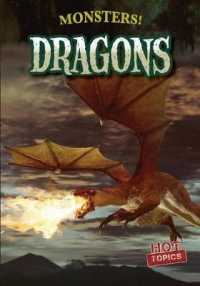- ホーム
- > 洋書
- > 英文書
- > Psychology
Full Description
Pointing is a fundamental gesture that connects individuals with their social and physical worlds. Whether communicating information about the external environment or serving to clarify to whom or what someone is referring, pointing may appear to be a uniquely human and universal action. However, it develops in varied social and cultural contexts, and even some nonhuman species point and can understand pointing cues. While there has been substantial research on the cultural, developmental, and evolutionary aspects of pointing, these perspectives remain fragmented. This book bridges this gap by bringing together leading scholars from cognitive psychology, evolutionary anthropology and biology, animal behavior, developmental psychology, and comparative psychology to synthesize current findings, highlight emerging directions, and provide students and researchers with a comprehensive view of the field.
Contents
Contents; List of Figures; List of Tables; List of Contributors; Introduction to Pointing: Culture, Development, and Evolution Mark A. Krause, Kim A. Bard and David A. Leavens; Part I. Culture and Development: 1. Pointing at, talking about, and looking away: patterns of personal deixis in the context of childhood socialisation in Indian families Nandita Chaudhary, Deepa Chawla and Punya Pillai; 2. The design of pointing Kensy Cooperrider; 3. Development of pointing in toddlers: cultural and epistemological perspectives Hélène Cochet; 4. Attention management by deictic gestures and demonstratives: analysis of the wayfinding practices of the Gǀui/Gǁana in the Kalahari Akira Takada; 5. Pointing to dinner participants in deaf and hearing children's and adults' signing and gesturing Aliyah Morgenstern and Stéphanie Caët; 6. The cultural nature of early social communication Zahra Halavani, Srujana Duggirala, Gülce Özker, Yitong Wang and Tanya MacGillivray; 7. Pointing at local knowledge: roaming place references in Gija conversations Caroline de Dear; 8. The role of infant pointing in child-led caregiving: how infants elicit the interactions that shape their development Claire D. Vallotton, Rachel Albert, Yatma Diop and Loria Kim; 9. How infants learn to follow attention from gaze-direction and pointing gestures Gedeon O. Deák and Yueyan Tang; 10. Thoughtless pointing: how the automatic coordination of touch and vision may produce pointing and joint attention Cathal O'Madagain; 11. Socially signaling robotics: a novel way of looking at gaze following and pointing Shoji Itakura; 12. Developmental significance of the human pointing gesture Ulf Liszkowski and Katharina Kaletsch; Part II. Evolution: 13. Pointing in chimpanzees who use American sign language Mary Lee A. Jensvold; 14. Are we missing the point? Reconsidering methods for detecting referential components of ape gestural communication Vesta Eleuteri, Alexandra Safryghin and Catherine Hobaiter; 15. The nature of the point: communication, association, or methodological muddle, with examples Heidi Lyn; 16. Changing the focus: pointing and attention in great Apes Marta Halina and Katja Liebal; 17. The neural foundations of gestural communication in captive chimpanzees William D. Hopkins; 18. Do baboons point? A review of research on gestural communication in a monkey Adrien Megueritchian; 19. Pointing with your nose: do elephants point, and how do we know? Lucy Bates, Richard Byrne and Joyce Poole; 20. Pointing and the object choice task: findings, flaws, and future directions Hannah Clark; 21. The use of human social cues in domestic farm animals Désirée Brucks and Christian Nawroth.







